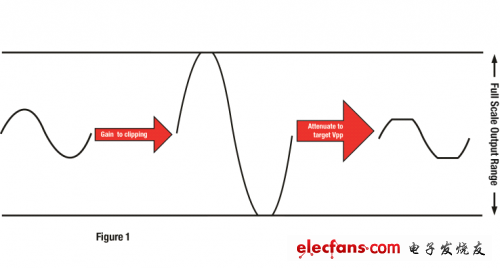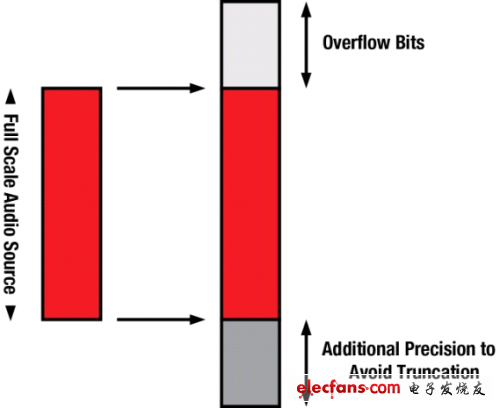For you to work harder to achieve higher audio system fidelity, we introduce you to a new concept. Many systems, especially those used in the home theater/mini-small band market, are cautiously adding distortion to the output signal. Although this does not seem to be in line with our common sense, there are reasons for designers to consider doing so. The main purpose of this technique is to maximize the average power output while limiting the appearance of peaks.
Some customers use the same power amplifier IC in some products. This allows them to purchase a device in larger quantities, reducing costs and simplifying inventory. They may use a small power source to save costs. The customer will use a closed loop, fixed gain amplifier with a small power supply. It limits the output voltage swing (by limiting the output), which protects the low-power supply from overcurrent conditions. However, a simple attenuator can make the system quieter. A little distortion of the output can greatly increase the perceived RMS power. Be cautious when determining the degree of distortion, and don't add too much!
For Other customers, limiting the voltage output of their signals can help limit speaker drift. However, care should be taken in this case because the high RMS power entering the speaker can cause reliability problems.
In digital processing systems, THD can be introduced by saturating digital samples to the signal. That is, use enough gain to move the most significant bit beyond the digital sample size. For example, you have a 24-bit word and your sample is 0x900000. With 12 Db gain, the highest audio bit exceeds the most significant bit (MSB) of the sample.
After that, downgrade the data to the audio output level you need. So, it can be summarized as:

Figure 1 Amplifies the signal to increase THD for clipping, then lowers the output to produce a more average power from a specific peak to peak voltage.
This sounds simple, but many audio processors are not actually the most significant bits = full-scale audio. For example, some TI audio processors use a data format called 9.23. This sampled data can be used to represent 16-bit or 24-bit data in the following ways:

Figure 2 Mapping standard 16-bit or 24-bit audio samples to a 32-bit or 48-bit memory location
As you can see, the MSB and LSB add some padding. The LSB is easy to understand—if you cut a 16-bit word (using a CD player), you still have bits that you can copy without cutting.
At the top, there are 9 bits to prevent accidental saturation of audio data. For example, if you use a 24-dB boosted equalizer (EQ) and you enter a “full scale†16-bit word, you may unintentionally saturate the signal, which increases distortion, and this is with us. The direction of hard work runs counter to each other.
There is amplitude loss when clipping, so THD (post) may allow a small amount of gain to pass through the THD manager. 10% distortion clipping results in approximately -1dB output level loss.
Instance operation
In our case, the system has a 9.23 audio path. We want to produce 10% THD at –12 dB output. The average input is –10 dBFS (–10 dB reference 24-bit full-scale audio source).
We need to zoom in to full scale and above ("overflow" 9 digits). Therefore, in a boost module, we add 10 dB to the original source to reach full scale, then add 27 dB to fill the 9 overflow bits. Now, increase the gain by 3dB to clip the signal. In total, we need to increase the gain by 40dB.
Now we have a signal that fills the audio path MSB and requires a cut so that the output can be output at –12 dB. This means a reduction of 39dB. The resulting output has 10% distortion and an output level of –12 dB. Look! We have now increased RMS power (by adding distortion) at –12 dB output while making the power supply and speakers work even easier.
When working with a graphics programmable processor (eg, PCM3070, etc.), TI's PurePath studio graphics development environment enables rapid prototyping and audition.
For more information on PurePath, please visit: http://www.TI.com.cn/tool/cn/aicpurepath_studio&DCMP=hpa_contributed_articles&HQS=Other+OT+purepath-ca
Next time, we will discuss the digital correction of the analog quadrature modulator imbalance, so stay tuned.
Built-in storage battery and charger, equipped with the function of over-charge and over-discharge protection and capacity display. It is used as working power supply for lightings, communications, laptops, and special instruments of emergency working, field working, press interviews, special vehicles and other fields.
It can be equipped with different type of storage battery such as lead acid battery, Nickel Cadmium Battery, silver zinc battery, Lithium Ion Battery and other storage batteries, providing various output voltage classes.
24V Dc Power Supply,Special Power Supply,12V Power Supply,24V Power Supply
Xinxiang Taihang Jiaxin Electric Tech Co., Ltd , https://www.agvchargers.com